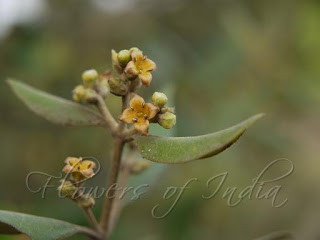FLOWERS TO INDIA
Aloe Leaf Cymbidium
Common name: Aloe Leaf Cymbidium • Konkani: Sonu
Botanical name: Cymbidium aloifolium Family: Orchidaceae (Orchid family)
Synonyms: Cymbidium intermedium, Cymbidium erectum, Epidendrum pendulam
Commonly found in North-East India and the Andaman, Aloe Leaf Cymbidium is an orchid growing on trees or rocks. It has very thick, rigid leaves, which remind one of Aloe. The species name aloifolium means Aloe-leafed. Plant blooms on a 75 cm pendant inflorescence with up to 75 flowers. Flowers are 4.25 cm wide with red stripes on petals and sepals. The flowers can be easily confused with Cymbidium dayanum but differs by having a rounded lip edge and an hourglass shape in the center of the lip. Flowering: March-May.
Aloe Leaf Cymbidium
Common name: Aloe Leaf Cymbidium • Konkani: Sonu
Botanical name: Cymbidium aloifolium Family: Orchidaceae (Orchid family)
Synonyms: Cymbidium intermedium, Cymbidium erectum, Epidendrum pendulam
Commonly found in North-East India and the Andaman, Aloe Leaf Cymbidium is an orchid growing on trees or rocks. It has very thick, rigid leaves, which remind one of Aloe. The species name aloifolium means Aloe-leafed. Plant blooms on a 75 cm pendant inflorescence with up to 75 flowers. Flowers are 4.25 cm wide with red stripes on petals and sepals. The flowers can be easily confused with Cymbidium dayanum but differs by having a rounded lip edge and an hourglass shape in the center of the lip. Flowering: March-May.
















